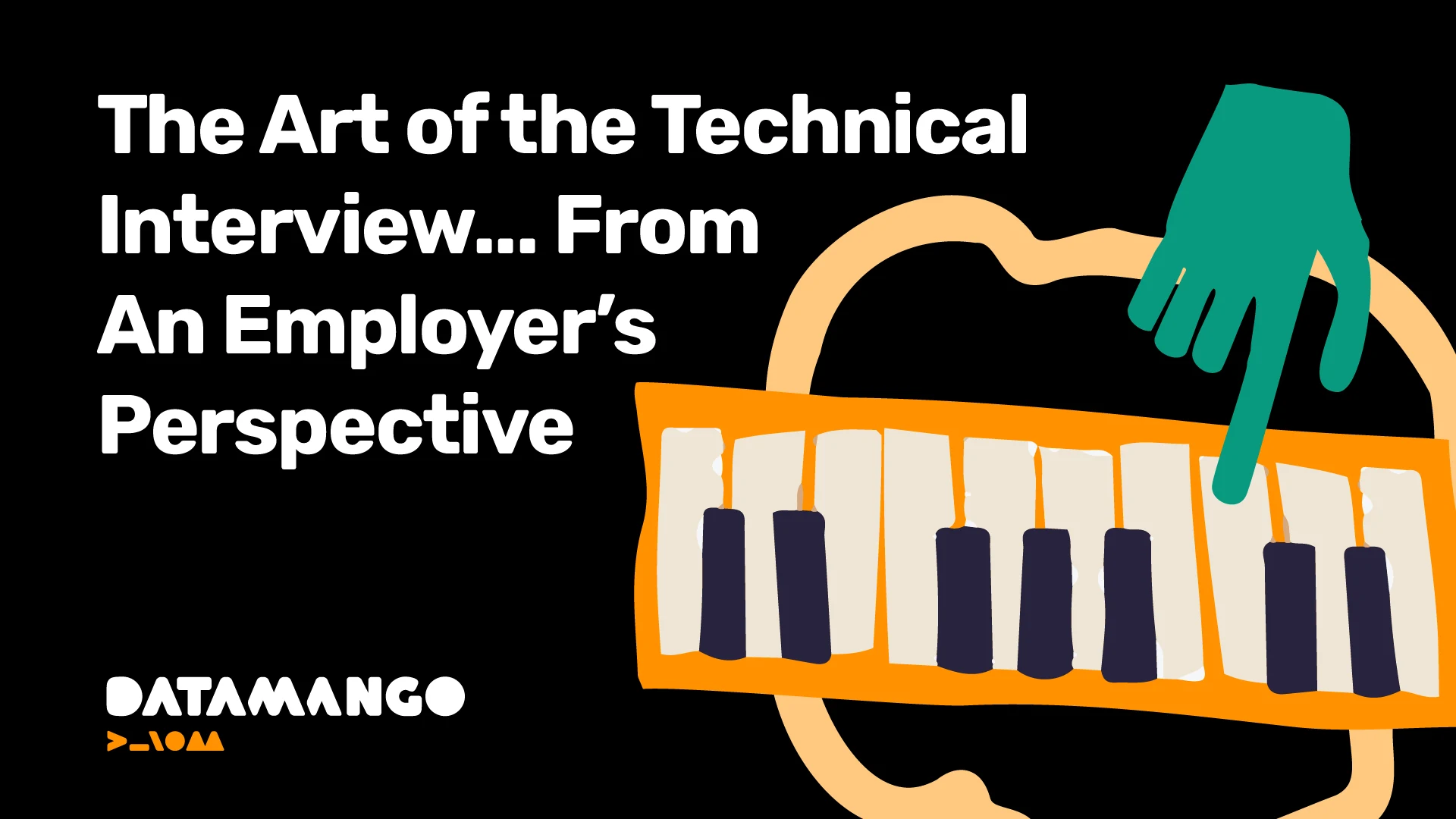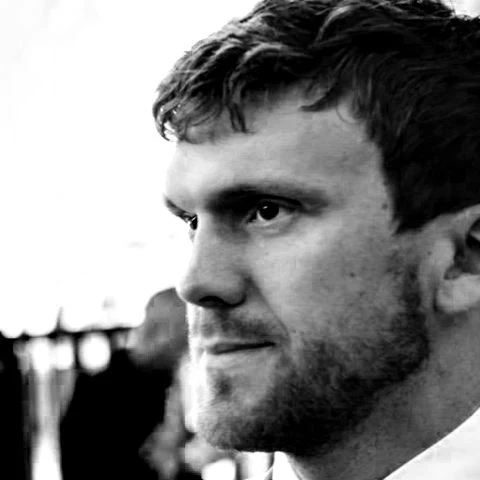
Creative, Inclusive, and Innovative: The Art of the Technical Interview From An Employer’s Perspective

by Dave Westbrook,
26-Mar-2024
Navigating technical interviews is an art—for both the candidate and the company. It involves balancing the technical and personal to unearth true potential and the right fit for everyone involved. These interviews are not just about ticking boxes but about engaging in meaningful dialogue that reveals a candidate’s problem-solving ability and showcases a collaborative spirit.
They’re also a chance for candidates to interview the company and consider the following questions: “Would I be a good fit here?” “Does this company reflect my values?” and “How can this company help me develop my skills and progress my career?”
Our Reflections and Insights
We’ve conducted many interviews over the years.
It’s crucial to help candidates gain a deeper awareness of why the company is hiring for that role and its specific expectations. Is it for a new project? How does the role help the company progress towards its overall targets? What can we, as an employer, offer people that sets us apart? This allows them to align their responses more effectively, imagine their role in addressing challenges, and help them answer critical questions about the company.
Structuring the interview to encourage a natural flow of conversation can significantly enhance this process. A rigid Q&A can feel daunting, but a dialogue that ties technical questions to real-life scenarios or past projects can reveal much about problem-solving, teamwork, and how everyone involved approaches different aspects of work. It also promotes an atmosphere that can help people discuss things they might have otherwise avoided.
Taking a Conversational Approach
Finding the sweet spot between technical depth and conversation is critical. Consider a discussion of Docker or DevOps processes. Rather than a dry interrogation, framing these topics around practical applications or challenges can turn the conversation into an engaging narrative.
- Example Conversational Prompt: "Could you share an experience where you had to deploy a complex application? What made it complex, and how did you overcome any hurdles you might have experienced?”
This question style assesses technical knowledge, highlights the candidate’s problem-solving strategies, and allows them to demonstrate their ability to learn from experiences.
Fostering Open Dialogue
An effective interview encourages candidates to share more freely, offering a window into their capabilities and how they might mesh with the team.
- Encouraging Example: "We'd love to hear about a project where you tackled a performance issue. What was the challenge, and how did you resolve it?”
Prompts like this can lead to informative exchanges, providing insights into how the candidate might approach future challenges within the company.
Incorporating Real-World Success Stories
Integrating real-world success stories can add depth and authenticity to the interview process. For instance, a quick anecdote about a previous candidate who demonstrated exceptional problem-solving skills under pressure can inspire similar openness and creativity.
Building a Foundation for Future Growth
The essence of technical interviews lies in their ability to uncover current competencies and a candidate's potential for growth, innovation, and teamwork. Integrating technical assessments into conversational, real-world discussions allows for a more holistic evaluation of each candidate, paving the way for more informed hiring decisions and a richer team dynamic.
As we refine our approach to technical interviews, let's remember the ultimate goal: to create an environment where talent thrives, innovation is celebrated, and every team member feels valued and understood.
Elevating Interview Strategies for Technical Teams
The interview process is crucial in assembling stellar technical teams. It’s a dialogue that unveils a person’s depth of expertise and potential synergy with the team. So, how can we fine-tune this approach for specific topics or subject areas?
Cyber security, network infrastructure, and software development are areas where a reasonably competent technical professional can arguably onboard relatively quickly, given their CV and a robust pre-screening process. So, discussions should be open and delve deeper than rote Q&A-style questions. They should underscore the importance of a bidirectional fit assessment for both candidate and employer.
Deepening Technical Dialogue
To foster a conversation that's engaging and technically deep, consider the following strategies:
- Cyber security: Go beyond standard questions and explore how candidates apply their knowledge in tangible scenarios:
- "Reflect on where you championed cyber security. How did you measure its success?"
- Networking: Present stories of resilience and innovation by discussing real-life challenges candidates have navigated.
- "Share an experience where you transformed network performance under constraint. What solutions did you employ?"
- Software Development: Get creative and assess people’s critical thinking skills by discussing their unique project contributions.
- "Describe a development hurdle that tested your limits. How did you overcome this challenge, and what was the learning curve like?"
Cultivating an Inviting Interview Environment
The interview’s tone can significantly shape the candidate's experience and influence their perception of your company. After speaking with the Datamango team, we’ve uncovered some of the things they found particularly notable and helped them decide to work with us:
- Use Warmth: Light-hearted dialogue, particularly about the candidate's passions or recent accomplishments, sets a positive, relaxed tone.
- Company Culture Insights: The interview should convey the essence of your company's environment and ethos, helping candidates visualise their place within the team.
- Sharing Experiences: Foster an atmosphere where candidates are encouraged to share successes and valuable learning moments, signalling a culture of growth and openness.
- Growth Pathways: Discussing potential avenues for professional development within your organisation shows a commitment to the candidate's future, making the role more appealing.
- Scenario-Based Discussions: Introducing hypothetical but realistic work scenarios can offer a glimpse into the candidate's problem-solving approach and teamwork philosophy.
- Acknowledge Preferences: Delving into a candidate's work preferences and aligning them with your team's practices demonstrates respect for someone’s work style and life balance.
It’s About Uncovering Mutual Potential
Elevating interview strategies goes beyond assessing skills—uncovering where the candidate and the team can complement each other. By enriching technical discussions and nurturing an engaging interview environment, we not only discover people’s capabilities but also share the essence of our team's spirit.
This nuanced approach paves the way for meaningful connections and more informed hiring decisions. It fosters a collaborative atmosphere where both the candidate and the team can envision a shared future of growth and innovation.
Get Creative: Rethink Technical Interview Questions To Reveal An Innovative Mindset
By reimagining technical interview questions, we aim for an approach that assesses technical skills and values creative problem-solving.
The Art of Problem-solving
Framing technical questions differently can highlight innovative problem-solving abilities and reveal a candidate’s acumen for creative and analytical thinking. The answer isn’t what’s important. It’s the journey to arriving at an answer—the old exam favourite of “show your working out”.
The Piano Tuner Example
“Without Googling, how many piano tuners are inside the M25?”
This is a perfect example of a question that assesses problem-solving skills beyond technical knowledge. It invites candidates to demonstrate some essential skills required for software development—logical and analytical thinking, problem-solving, and creativity without relying on specific technical expertise.
Here’s a breakdown of how you could approach answering this question:
- Consider the ratio of people who play the piano. How many people do you know who play the piano?
- Account for population and the geographic area of Greater London
- From this, estimate the number of pianos serving that population, including factors like how many might have a piano at home or music schools, where one piano might serve multiple people.
- Recognise that not all pianos are tuned regularly, but the recommended frequency is, for example, once a year.
- Factor the living wage in London to estimate how many pianos a tuner would need to service to earn a sustainable income, assuming an average piano tuning cost.
- Combine these considerations to estimate the number of piano tuners needed to service the pianos in London.
We’re not too concerned about the numbers in this scenario—we’re looking for people who go beyond the simple steps and consider different approaches to answering the question.
Think-outside-the-box questions like this are particularly effective because they mirror the multifaceted nature of software development challenges. They require a logical breakdown of a broad question into smaller, manageable issues.
This approach reflects the essence of programming and problem-solving in technology: starting with a big-picture challenge, breaking it down into its constituent parts (akin to functions in programming), and then gradually building up a solution by addressing each more minor problem. Iteratively solving these sub-problems and reusing solutions (similar to classes and interfaces in programming) showcases a candidate’s logical reasoning, analytical skills, and ability to construct complex solutions from simpler, modular components.
Therefore, the question assesses critical thinking and problem-solving capabilities in a way that’s highly relevant to software development, making it an insightful tool for evaluating potential hires.
Embracing Emerging Technologies
Innovation is critical in the tech industry, and an interview process that explores a candidate's adaptability to new technologies can provide valuable insights:
- Learning and Adaptation: Questions about how candidates stay updated with new technologies and examples of their practical application can illuminate their commitment to continuous learning and innovation.
- Future Visioning: Engaging candidates in discussions about potential uses of emerging technologies in future projects reveals their capacity for strategic and innovative thinking.
Fostering an Inclusive and Open Dialogue
Ensuring the interview process values diverse perspectives and experiences is crucial for building a dynamic and inclusive team:
- Inclusive Questioning: Craft questions that allow for multiple valid approaches, celebrating the diversity of thought and experience.
- Encouraging Diverse Experiences: Questions that invite candidates to share unique perspectives or unconventional solutions to problems can highlight the value of diverse backgrounds and thought processes in driving innovation.
A New Paradigm for Technical Interviews
Of course, not every interview will cover everything we’ve discussed here. But by rethinking our approach to technical interviews to emphasise creative problem-solving, adaptability to emerging technologies, and inclusivity, we can uncover candidates who are not only technically adept but also bring a wealth of creativity and diverse perspectives to the table. This holistic approach paves the way for a more inclusive and innovative future in the tech industry.
Want to find out more about how we assess our candidates?




